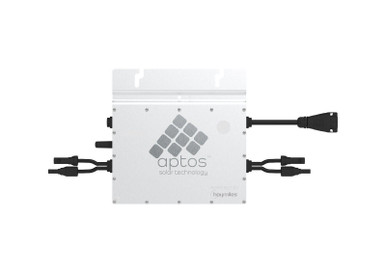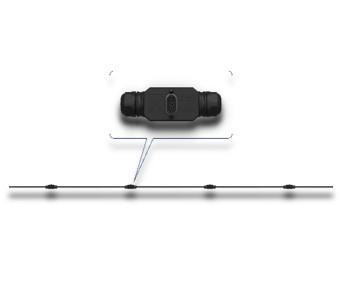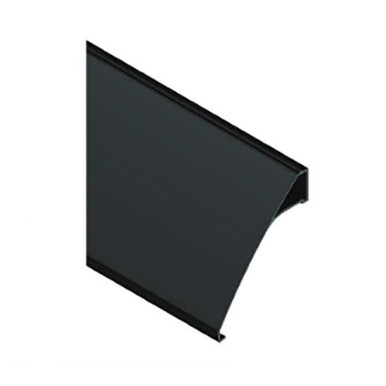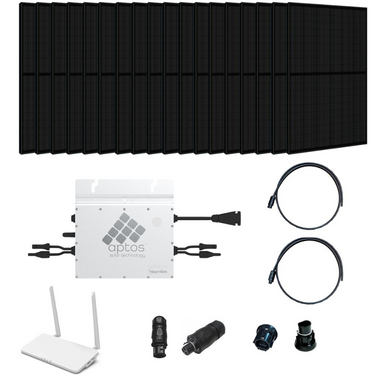Hi Everyone!
I'm looking to get some feedback on a system in planning to buy later this week. Signature solar has a sale going on and i want to take advantage of it. This would be a grid tied system using micro inverters. The system would be roof mounted. The system would be sitting on a 4-12 roof in Maine. The ground snow load is 80psf. When this building was built the trusses where engineered to support a future solar installation. the parts I'm looking at right now are,
probably 32 of these panels

 signaturesolar.com
signaturesolar.com
probably 16 of these micro inverters and trunk cable

 signaturesolar.com
signaturesolar.com

 signaturesolar.com
signaturesolar.com
probably 70 of these mounting brackets

 signaturesolar.com
signaturesolar.com
Additional racking material to include

 signaturesolar.com
signaturesolar.com

 signaturesolar.com
signaturesolar.com
I know I'm also going to need some conduit, an AC disconnect, Some THHN Wire going back to the breaker box, and some kind of breaker, though not sure exactly what size or if it needs to be a special kind of breaker. I think the wire gauge needs to be 8 and I think the breaker needs to be a 60 amp breaker. I think the AC disconnect needs to be a 60 amp switch.
Any advice or obvious flaws? Any parts I'm missing?
I'm looking to get some feedback on a system in planning to buy later this week. Signature solar has a sale going on and i want to take advantage of it. This would be a grid tied system using micro inverters. The system would be roof mounted. The system would be sitting on a 4-12 roof in Maine. The ground snow load is 80psf. When this building was built the trusses where engineered to support a future solar installation. the parts I'm looking at right now are,
probably 32 of these panels

13.3kW Pallet - NE Solar 370W Mono Solar Panel (Black) | NESW 370MH-M6 | Full Pallet (36) - 13.3kW Total
Signature Solar provides solar panels, off-grid solar systems, grid-tie, and hybrid systems. Quality solar inverters, bifacial solar panels, complete solar kits, solar batteries. Featuring brands such as EG4 Electronics with their solar battery, LifePower4 and EG4 LLifePower4 and EG4 LL
 signaturesolar.com
signaturesolar.com
probably 16 of these micro inverters and trunk cable

APTOS MAC-800 Dual Unit | 2:1 Trunk Version Microinverter
Signature Solar provides solar panels, off-grid solar systems, grid-tie, and hybrid systems. Quality solar inverters, bifacial solar panels, complete solar kits, solar batteries. Featuring brands such as EG4 Electronics with their solar battery, LifePower4 and EG4 LLifePower4 and EG4 LL
 signaturesolar.com
signaturesolar.com

Aptos AC Trunk Cable 2.2M | 2.2M 12G AC TRUNK CABLE
Signature Solar provides solar panels, off-grid solar systems, grid-tie, and hybrid systems. Quality solar inverters, bifacial solar panels, complete solar kits, solar batteries. Featuring brands such as EG4 Electronics with their solar battery, LifePower4 and EG4 LLifePower4 and EG4 LL
 signaturesolar.com
signaturesolar.com
probably 70 of these mounting brackets

SnapNrack | TopSpeed™ | Solar Panel Roof Mount KIT (1 Mount (A) and 1 Clamp (B)
Signature Solar provides solar panels, off-grid solar systems, grid-tie, and hybrid systems. Quality solar inverters, bifacial solar panels, complete solar kits, solar batteries. Featuring brands such as EG4 Electronics with their solar battery, LifePower4 and EG4 LLifePower4 and EG4 LL
 signaturesolar.com
signaturesolar.com
Additional racking material to include

SnapNrack | TopSpeed™ | Universal Link
Signature Solar provides solar panels, off-grid solar systems, grid-tie, and hybrid systems. Quality solar inverters, bifacial solar panels, complete solar kits, solar batteries. Featuring brands such as EG4 Electronics with their solar battery, LifePower4 and EG4 LLifePower4 and EG4 LL
 signaturesolar.com
signaturesolar.com

SnapNrack | TopSpeed™ | RL Universal Skirt | 70 inch
Signature Solar provides solar panels, off-grid solar systems, grid-tie, and hybrid systems. Quality solar inverters, bifacial solar panels, complete solar kits, solar batteries. Featuring brands such as EG4 Electronics with their solar battery, LifePower4 and EG4 LLifePower4 and EG4 LL
 signaturesolar.com
signaturesolar.com
I know I'm also going to need some conduit, an AC disconnect, Some THHN Wire going back to the breaker box, and some kind of breaker, though not sure exactly what size or if it needs to be a special kind of breaker. I think the wire gauge needs to be 8 and I think the breaker needs to be a 60 amp breaker. I think the AC disconnect needs to be a 60 amp switch.
Any advice or obvious flaws? Any parts I'm missing?



